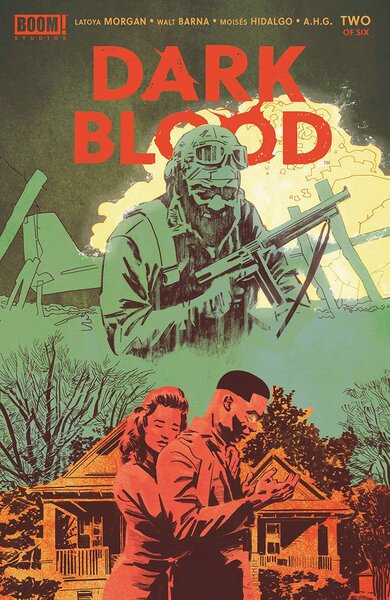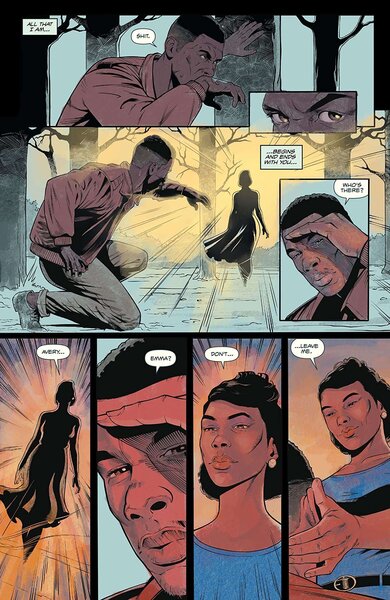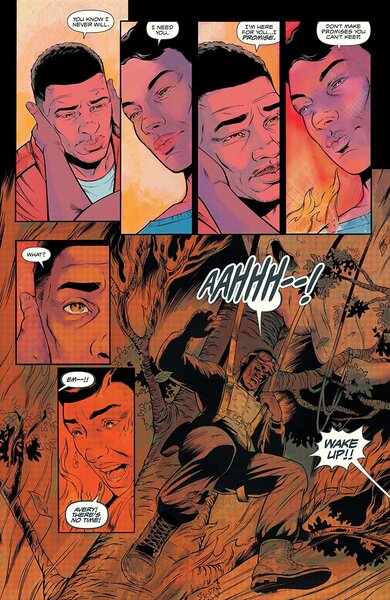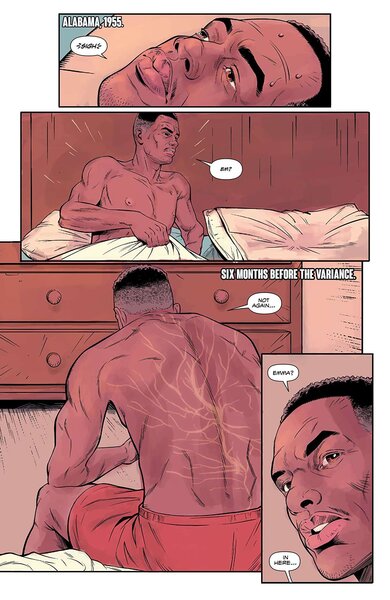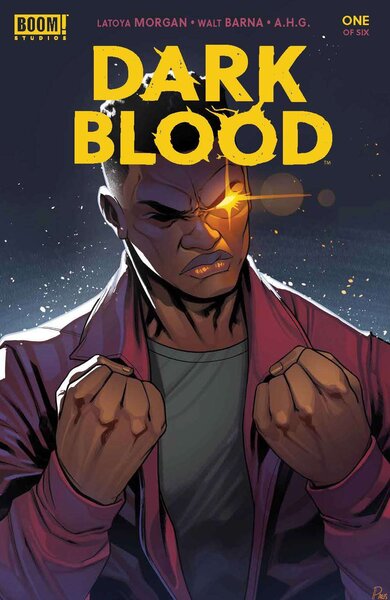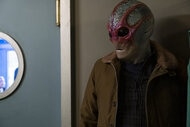Create a free profile to get unlimited access to exclusive videos, sweepstakes, and more!
Indie Comics Spotlight: LaToya Morgan’s 'Dark Blood' explores the Jim Crow South with superpowers
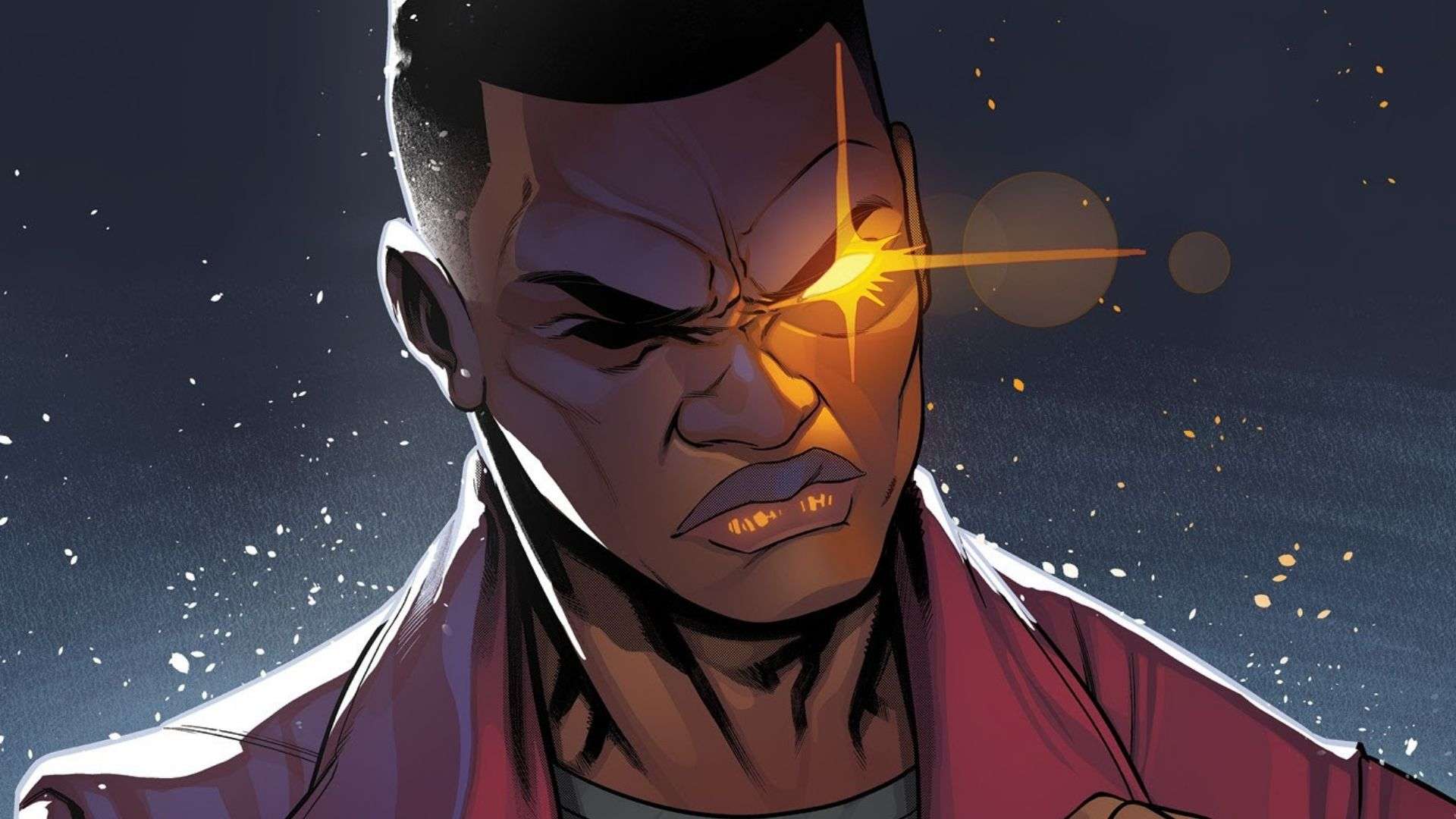
LaToya Morgan has a career that would make any geek jealous. She has written for hit shows like American Horror Story and The Walking Dead, and was also both a co-executive producer and a writer on Into the Badlands. Earlier this year, Morgan signed an exclusive multi-year deal with Warner Bros. Television to create projects under her own company Tinker Toy Productions. Then, somehow in between her executive producer duties on J.J. Abrams' Duster and the HBO Max adaptation of The Age of Miracles, Morgan found time to write the new historical supernatural horror comic Dark Blood through BOOM! Studios.
Dark Blood, featuring stunning artwork by Walt Barna (DC Comics SpaceJam: A New Legacy The Graphic Novel), colors by A.H.S., letters by AndWorld Design, and covers by Valentine DeLandro, has been an instant success since its debut this summer. Both Issues 1 and 2 have been rushed back to print at least twice as pre-orders roll in for the arrival of Issue 3 on Sept. 22.
The story follows family man Avery Aldridge, a World War II vet who regularly works double shifts at the local diner to provide for his expecting wife and their young daughter. But Avery also has very real mental and physical scars from the war, not to mention the everyday internalized trauma he experiences living in the Jim Crow South in the 1950s.
Told in two different timelines, Dark Blood chronicles both Avery’s experiences as a paratrooper in WWII and his life at home after the war where he has developed strange new telekinetic abilities. Both timelines are moving toward The Variance, a fixed point that will reveal the source of Avery’s powers and a life-changing decision.
This isn’t Morgan’s first foray into comics; in 2014, she wrote both Goddess, Inc. and Robyn Hood, a supernatural prison break story based on the classic folktale for Zenoscope. This time around, she’s approaching her comic book writing from a cinematic perspective and it’s paying off. SYFY WIRE caught up with Morgan to discuss the real-life history behind Dark Blood, and how both X-Men and Spider-Man origin stories influenced the plot.
What has it been like coming back to comics?
It's great! I've been a comic book fan since I was a kid and I was a total X-Men and Spider-Man fan. Those are my jams. I am still a huge Spider-Man fan. When I saw the trailer for Spider- Man: No Way Home I literally lost my mind. I've always loved comic books but I couldn't draw. So that's when I taught myself how to write comics [and ended up] with Zenescope.
Dark Blood which takes place in the 1950s, one of your other projects, AMC’s TURN: Washington Spies is also a period piece. What attracts you to historical fiction?
I love historical fiction. My favorite part is really digging into the history and knowing exactly what happened and then trying to create an amalgam of that with your story that sort of fits in the parameters of [the events of the time period] but then spin it off. You can tell a thriller or romance, if you're playing in the right sandbox.
Are there any nods or references to real veterans in the story?
Well, it's an amalgamation of people. Friends or family who were veterans and then also a few articles that I came across and doing my research about some of the Tuskegee Airmen and soldiers who were in World War II. There are some things that people don't know about what happened to them behind enemy lines. I was blown away by the stories. And what I like to do is just try to put those things together and tell a compelling story.
I like to sneak and put little Easter eggs of personal things that mean something to me in every story that I write. And I always try to put in one family member's name for good luck.
For instance, Emma, [Avery’s wife] is named for my great-grandmother.
You mentioned both the physical and mental scars Avery carries from the war, but he was able to survive even with minimal care before he had powers, correct?
Absolutely. That was the inspiration for me to do the story. Black people not getting the proper care that they need. Black veterans who [served in the war], with excellence and bravery and honor, and coming back to America being treated the way black people were treated then, still makes me mad.
Dark Blood [addresses that pain] but a part of the story is turning those negatives and that energy on its head.
Since this story takes place during the Jim Crow Era, how did you interpret Avery’s ongoing struggle with when to use his powers?
We'll see in future issues how he's grappling with that. He is not just imbued with these powers and automatically knows how to use them. Part of the struggle is the learning curve. There's a volatility and a danger there. And there's a cost that comes with using those powers.
So that's where the beauty of me being a big fan of [characters like] Spider-Man or the X-Men come in. I’ve always loved how they had these amazing powers, but there was always a human cost to them. I think we'll see a little bit of that with Avery and his journey. It’s also asking, “What are you willing to sacrifice and how much are you willing to sacrifice to protect those you love?”
Dark Blood is creatively very intense but it features very little dialogue. Was that a decision you made going in? Or was that a creative choice you made once you saw Walt Barna’s artwork?
I love this question so much because the reason why I write the way that I do now, is because of trial and error in the earliest series that I did. I used too many words, [and to compensate], big bubbles, with smaller writing. You can't really get into the rhythm of a comic, if you write like that.
With each effort, I got better and better at doing it. Now I know how to streamline my writing and if I'm going to write a line, I try to punch you in the throat with the line. I want to make it impactful. So I just became really aware of how to make the rhythm of the book move.
And I’m all about writing until the end of the page. By that, I mean, I want people to turn that page and want to know what's happening on the next page. So that's my favorite part about writing.
Had you worked with Walt Barna before?
I did not. I knew a little bit of his work and I'd seen some of it online, but the way he brought the first issue to life? It was spectacular. It was even better than what I imagined. That, to me, is the best part of collaboration.
I gather a ton of notes and photos so my artists can understand what I'm envisioning, but Walt just elevated it times a thousand. His work is incredible. There's a tiny panel, I think it’s on the second or third page where Avery is thinking, “Don't panic. Breathe.” And he's just looking over his shoulder and the look on his face is so perfect and beautiful. You feel the tension, even in those tiny little squares. That's the gift of Walt Barna. He can really capture the power, the emotion in each panel.
Since you’ve landed your incredible deal with Warner Bros. Television and launched TinkerToy Productions, are there any plans for adapting Dark Blood into a series?
Maybe! That would be amazing, wouldn't it? To create a TV show or movie out of this? That would make my heart soar truly. I wanted to write this as a comic book so that I can show a proof of concept. I think it's such an interesting story and I love genre, and this is a way to show genre on the page. It really is almost like a storyboard for the show.
Walt, A.H.G. (who did our colors), AndWorld (our letterers) — everybody did such a great job that I feel like even if I just handed you the first issue of Dark Blood, you can visualize it as a movie, or a TV show.
